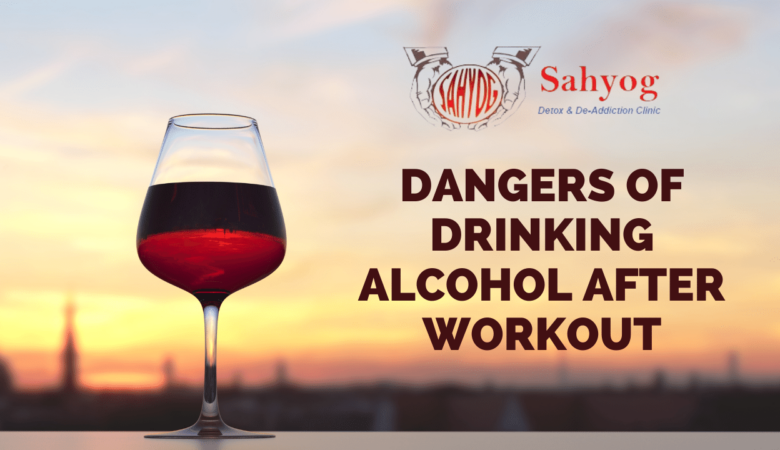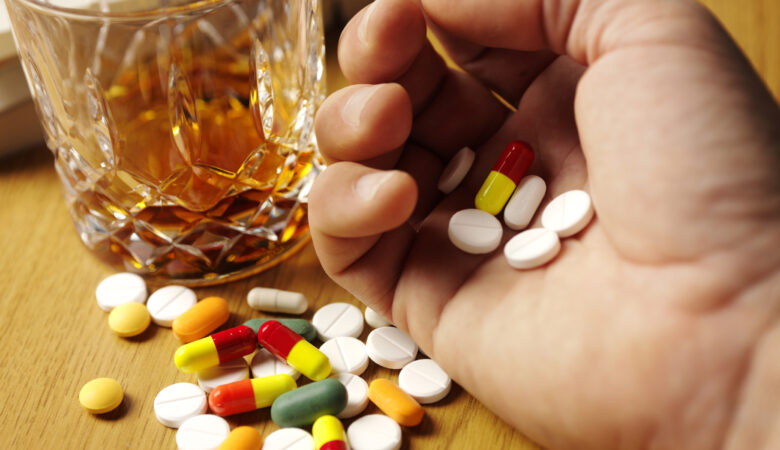Don’t Let Drinking Alcohol After Workout Sabotage Your Progress
Numerous people enjoy an after-work beer or wine while they’re sitting at home watching TV or chilling with friends. However, you might be undoing all the hard work you put into your workout if you drink alcohol afterward—especially if you drink too much and wind up hungover in the morning, making yourself sick before your next workout session. How much is too much? In some cases, drinking alcohol after a workout can be healthy for your body, as it can help you relax and allow you to recover from exercise. However, if you drink too much, it can have negative side effects on your health that outweigh any benefits. When drinking alcohol after working out, monitor your intake so that you don’t consume more than is healthy for your body. Be sure to eat before or while drinking, and never drink when you are already dehydrated. Remember: There is no such thing as healthy alcoholism—so keep your workouts in mind when deciding how much alcohol is right for you. Finding it difficult to fall asleep Most people are aware that drinking alcohol can interfere with sleep, but there’s more to it than just being kept awake. In fact, sleep can have an important influence on our health and fitness goals. Can you work out after drinking? We’ll explore how alcohol affects sleep and your fitness goals, plus tips for exercising after a night out. First, let’s look at what happens when we drink alcohol. Two or three drinks in one sitting can leave us feeling pretty good—and then sleepy—in about 30 minutes. This is because alcohol is a depressant, which means it slows down brain activity and body functions. And while alcohol can make you feel drowsy, it also interferes with sleep by reducing rapid eye movement (REM) sleep and increasing time spent in light sleep, which isn’t as restorative. Waking up feeling hungover If you’re anything like me, drinking too much means waking up feeling like a truck has run over your head. I once spent two full days in bed after a night out with friends. Not only did it ruin my weekend, but it forced me to skip exercising and eating healthy for two days straight. And let’s be honest: is that really going to help you lose weight? I don’t think so. In fact, you might even gain some unwanted pounds from all those missed workouts and unhealthy meals when your body is craving nutrients more than ever. Yikes! Another reason not to drink alcohol before working out is because it can dehydrate you. What happens when you’re dehydrated? Well, besides feeling tired and run down, your body simply doesn’t work as well as processing food or burning fat for energy. But hey, if you think skipping your workout until tomorrow morning will be an acceptable excuse—think again. Your body needs its rest after a hard workout so that it can rebuild muscle fibres and repair any damage caused by exercise-induced inflammation. Tolerance Levels Increases over time Your body builds up a tolerance to alcohol over time. This means that it takes more and more alcohol to feel good, and more time for your body to metabolize it out of your system. This is why some people wake up with an even worse hangover after drinking less than they did in years past. And when you exercise regularly, you’re much less likely to experience a positive result from that drink or two after a workout. In fact, because alcohol can dehydrate you, heavy drinking may actually reduce your performance at workouts rather than improving it. In addition to dehydration, excessive amounts of alcohol can have a negative impact on your heart health as well as your ability to burn fat while working out. Excessive drinking can also cause fatigue, which can lead to poor workouts overall. If you are going to drink alcohol after a workout, try limiting yourself to one glass of wine or beer and stick with red wine if possible (it has been shown to be healthier than white). If you don’t think you can stop at one glass, don’t bother drinking at all—alcohol will not help your fitness goals. Long-term health risk Drinking too much alcohol can lead to a variety of health risks, from cancer to organ failure. We’re talking about long-term health problems that won’t crop up overnight—but a few glasses of wine every night (or every morning) can build up over time and have lasting effects on your body. If you want to maintain good physical health, avoid drinking after workouts. While it may seem like a quick way to de-stress or unwind at first, in reality it can make your post-workout recovery period even longer. And if you do intend to have some drinks post-workout, don’t drink them before working out. Having more than one drink can reduce muscle strength and increase risk of injury while exercising. Mixing alcohol with exercise can also cause dehydration, which is not only dangerous but counterproductive as well; athletes need extra hydration in order for their bodies to work properly. Managing Excessive weight gain While there are occasional advantages to drinking alcohol after working out, many experts warn against consuming alcohol if you intend to head to the gym. In general, beer and wine contain more carbohydrates than liquor and are absorbed faster by your body, which can cause blood sugar levels to spike. Consuming alcoholic beverages within two hours of working out could also lead to dehydration due to alcohol’s diuretic properties. Even if you’re not planning on hitting up a spin class or taking part in any other strenuous activity, drinking alcohol after working out can still be dangerous. As your body processes alcohol, it diverts blood flow away from your muscles and towards your stomach and liver. This means that while you may feel invigorated after a few drinks, there’s a good chance that you won’t be able to perform at full capacity. Conclusion Have you ever wondered






